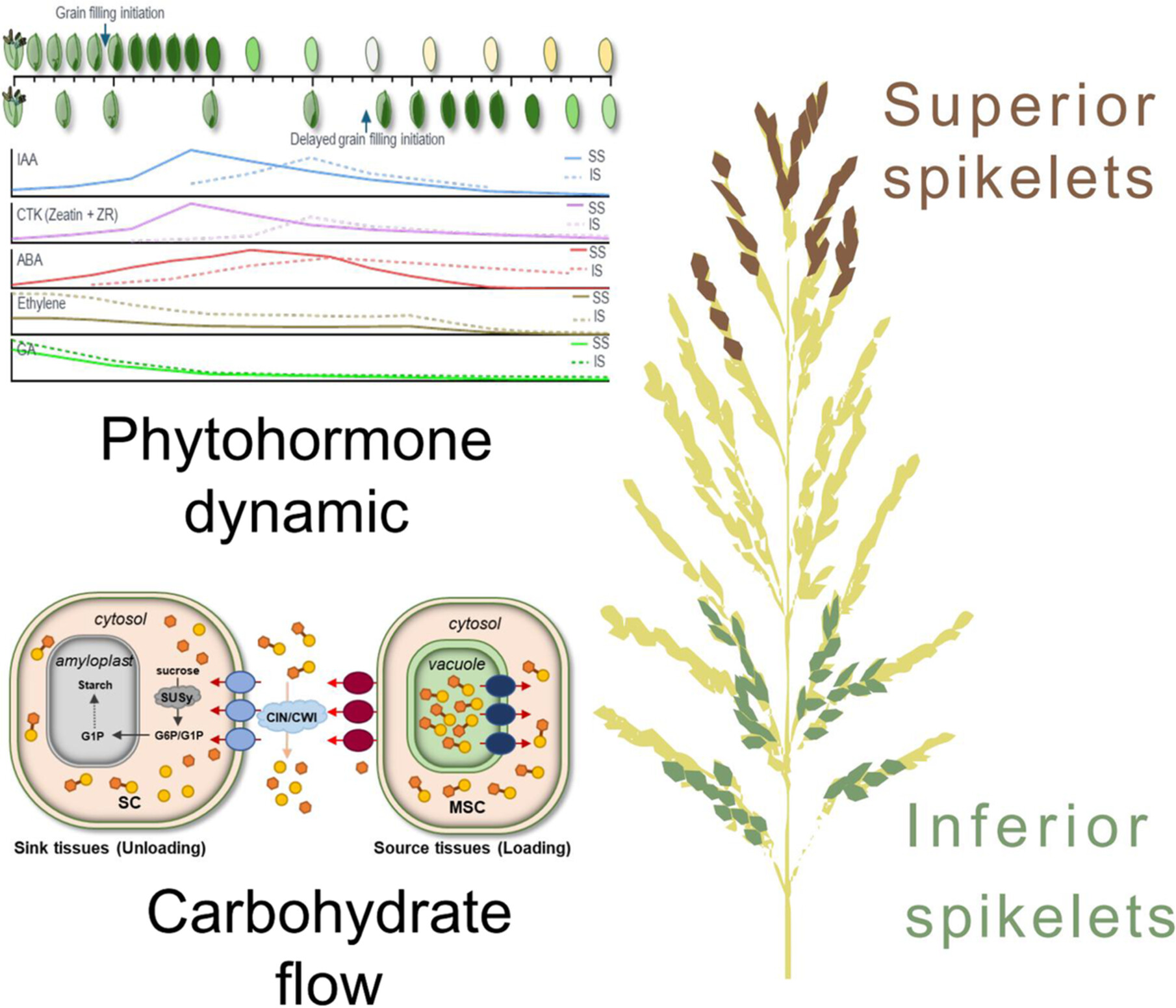

Journal of Integrative Plant Biology >
Carbohydrate flow during grain filling: Phytohormonal regulation and genetic control in rice (Oryza sativa)
Received date: 2024-07-11
Accepted date: 2025-03-06
Online published: 2025-04-07
Supported by
National Natural Science Foundation of China (32301739, 32171927), the General Research Fund (12105824, 12103220, 12101722), The science and technology innovation Program of Hunan Province (2024RC3182), and the Natural Science Foundation of Hunan Province (2025JJ70111).

Bohan Liu, Shuan Meng, Jianchang Yang, Jun Wu, Yan Peng, Jianhua Zhang, Nenghui Ye . Carbohydrate flow during grain filling: Phytohormonal regulation and genetic control in rice (Oryza sativa)[J]. Journal of Integrative Plant Biology, 2025 , 67(4) : 1086 -1104 . DOI: 10.1111/jipb.13904
/
| 〈 |
|
〉 |